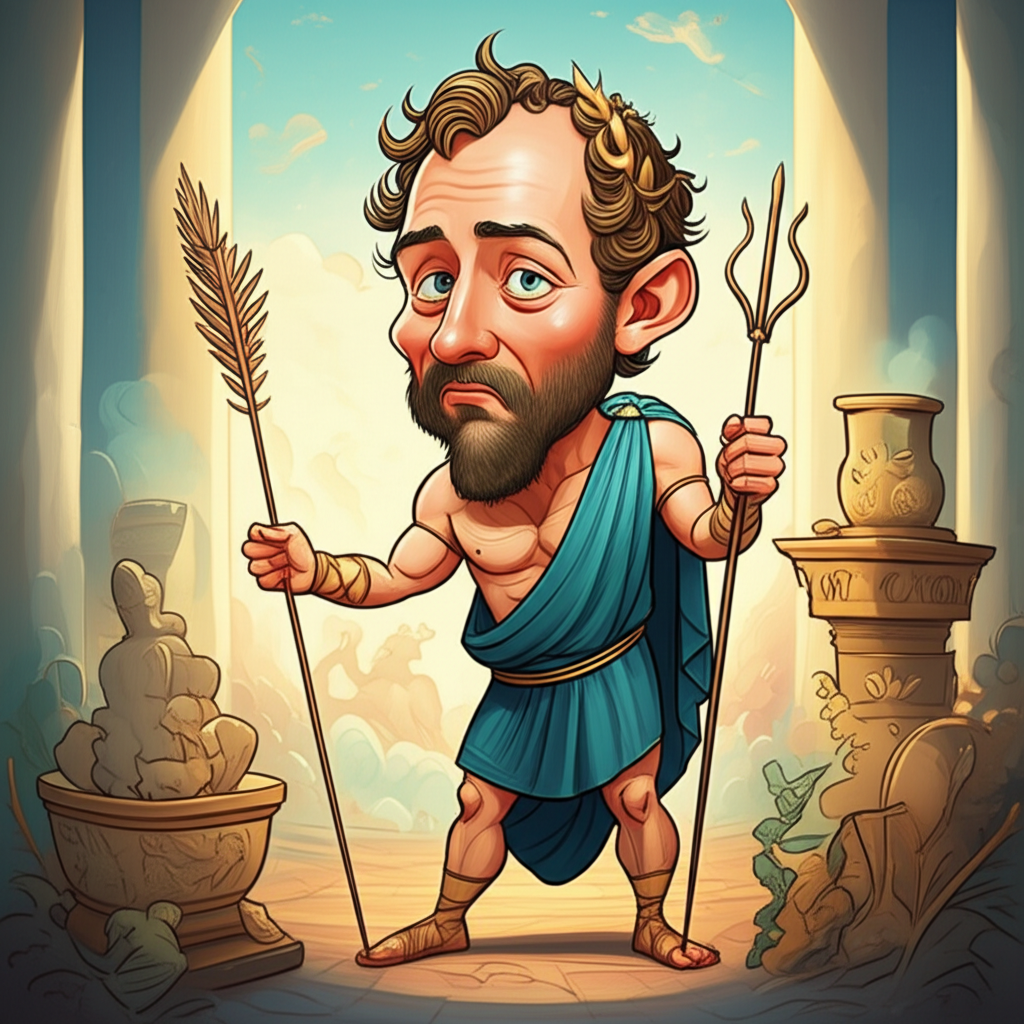
Introduction:
The story of Hermes and the Trial of Eleusinian Mysteries originates from ancient Greece, a civilization renowned for its rich tapestry of myths and legends. These stories, passed down through generations, served not only as entertainment but also as a way to understand the world, explain natural phenomena, and explore the complexities of human nature. This narrative is a fictional creation of the ancient Greeks, and as such, it is crucial to remember that it is a product of human imagination and cultural storytelling, not a reflection of reality.
Origins and Cultural Background:
The myth of Hermes and the Eleusinian Mysteries would have been told within the context of ancient Greek society, flourishing from roughly the 8th century BCE to the 6th century CE. This era was characterized by a polytheistic belief system, where the natural world and human affairs were governed by a pantheon of gods and goddesses. The Greeks viewed the world as a realm infused with divine presence, where the actions of mortals could both please and anger the gods. The Eleusinian Mysteries themselves were a series of secret initiation ceremonies held annually at Eleusis, near Athens. These rites were dedicated to Demeter, the goddess of agriculture, and her daughter Persephone, and were believed to promise initiates a better afterlife. Secrecy was paramount; revealing the details of the rituals was punishable by death. In this world, myths played a vital role in explaining the unexplainable, providing moral guidance, and fostering a sense of community through shared cultural narratives.
Character Description: Hermes
Hermes, in Greek mythology, is the swift-footed messenger of the gods, a role that earned him his winged sandals and caduceus (a staff entwined with serpents). He is often depicted as a young, athletic man, possessing both intelligence and cunning. He is also the protector of travelers, merchants, and thieves, a multifaceted figure whose influence extends to various aspects of life. Symbolically, Hermes represents communication, diplomacy, agility, and the ability to bridge different worlds – the mortal and the divine. He is not a god to be worshipped, but rather a figure within a complex, imagined system of belief.
Main Story / Narrative Retelling:
The air hung heavy with the scent of incense and damp earth. The Eleusinian Mysteries were underway, shrouded in secrecy and hushed whispers. Demeter, her face etched with the sorrow of Persephone’s abduction to the Underworld, presided over the sacred rites. A select few initiates, their faces pale with anticipation, were about to undergo the final trial, a test of their worthiness to receive the secrets of life, death, and rebirth.
Unbeknownst to all but a handful of initiates, a figure stood concealed in the shadows of the Telesterion, the great hall where the mysteries were performed. It was Hermes, the swift-footed messenger, his winged sandals barely touching the ground. He had not come to participate in the rites, but rather to observe, and if necessary, to intervene. Zeus, king of the gods, had tasked him with ensuring the integrity of the mysteries, having received whispers of corruption and imbalance within the priesthood.
Hermes, invisible to the mortal eye, watched as the initiates were led through a series of symbolic acts and rituals. They drank from a sacred cup, danced in a torchlit procession, and listened to the pronouncements of the Hierophant, the high priest. He observed the sincerity of some, the fear in others, and, most disturbingly, the arrogance in a few.
As the final trial approached – a descent into a symbolic underworld representing the journey of Persephone – Hermes sensed a disturbance in the very fabric of the mysteries. One of the priests, driven by ambition and a desire for power, was manipulating the ritual, subtly altering the sacred words and actions to favor a particular initiate, a wealthy Athenian nobleman who had promised him great rewards.
Hermes, ever the protector of justice and divine order, could not allow this desecration to continue. He could not reveal himself directly, lest he break the ancient laws that forbade divine intervention in mortal affairs, except in the most extreme circumstances. Instead, he used his cunning and his mastery of illusion.
As the nobleman began his descent into the simulated underworld, Hermes conjured a vision. The darkness that surrounded the initiate seemed to solidify, morphing into a grotesque parody of Hades, the king of the Underworld. The vision spoke in a booming voice, accusing the initiate of arrogance and a lack of true understanding. The nobleman, terrified, stumbled back, his carefully cultivated composure shattered.
Chaos erupted within the Telesterion. The priest, his carefully laid plans unraveling, tried to regain control, but the other initiates, witnessing the nobleman’s terror, began to question the authenticity of the rites. Hermes, still invisible, whispered suggestions into the minds of the more virtuous initiates, guiding them to expose the priest’s corruption.
The truth soon emerged. The priest was revealed to be a charlatan, motivated by greed and a thirst for power. He was stripped of his position and banished from Eleusis. The mysteries were cleansed, and the rites were restored to their proper form.
Hermes, his task complete, vanished as swiftly as he had appeared. He returned to Olympus, leaving behind a lesson about the importance of integrity and the consequences of abusing sacred rituals. The Eleusinian Mysteries continued, renewed and purified, offering hope and solace to those who sought a deeper understanding of life and death.
Symbolism and Meaning:
The story of Hermes and the Trial of Eleusinian Mysteries can be interpreted as a representation of the ancient Greek values of justice, piety, and the importance of maintaining the sanctity of religious rituals. Hermes, as the divine messenger, embodies the principle of divine intervention in human affairs when those affairs stray too far from the path of righteousness. The corruption within the priesthood symbolizes the potential for abuse of power within religious institutions. The trial itself represents the challenges and obstacles that individuals must overcome to achieve spiritual enlightenment. For the ancient Greeks, this myth may have served as a cautionary tale, reminding them to uphold the integrity of their religious practices and to be wary of those who seek to manipulate them for personal gain.
Modern Perspective:
Today, the myth of Hermes and the Eleusinian Mysteries is studied in literature, mythology, and cultural studies courses. It provides valuable insights into the religious beliefs, social structures, and ethical values of ancient Greece. In modern adaptations, the story can be found referenced in books, films, and video games, often serving as inspiration for narratives that explore themes of corruption, divine intervention, and the search for spiritual truth. The mysteries themselves continue to fascinate scholars and artists alike, representing a lost world of ritual and secret knowledge.
Conclusion:
The tale of Hermes and the Trial of Eleusinian Mysteries is a fictional story from ancient Greece, a product of human imagination and cultural storytelling. It offers a glimpse into the world of the ancient Greeks, their beliefs, and their values. It’s a narrative that has endured through the ages, captivating audiences with its themes of divine intervention, corruption, and the search for spiritual understanding. As Muslims, we acknowledge that Allah is the sole Creator and Sustainer, and this is a tale for cultural and educational understanding, a piece of heritage, imagination, and storytelling tradition.





